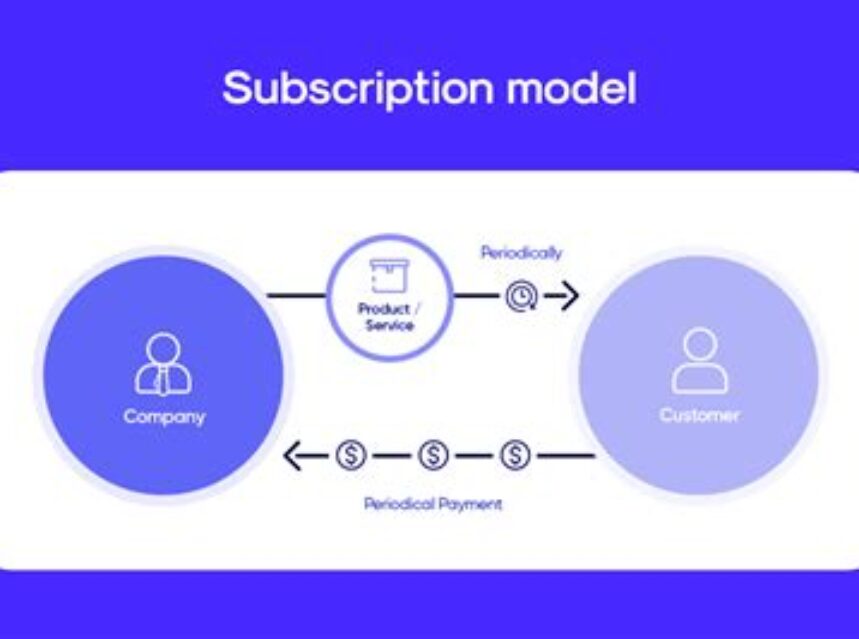Maximizing the Benefits of Subscription-Based Business Models

Learn how to build a successful subscription-based business by understanding customer needs, tailoring packages, and optimizing retention strategies. Maximize subscription performance with effective strategies.The subscription-based business model has become increasingly popular in recent years, offering companies a consistent source of revenue and customers with a convenient and personalized experience. In this blog post, we will explore the various aspects of maximizing the benefits of subscription-based business models. From understanding the fundamental concept of subscription-based models to identifying key customer needs and preferences, developing tailored subscription packages, and implementing effective customer retention strategies, we will delve into the strategies and tactics necessary to thrive in this business model. Additionally, we will discuss the importance of measuring and optimizing subscription performance to ensure long-term success. By the end of this post, you will have a comprehensive understanding of how to leverage subscription-based business models and the tools needed to maximize their potential benefits. Whether you’re a business owner or a consumer, this post will provide valuable insights into the world of subscription-based services.
Understanding Subscription-Based Business Models
Subscription-based business models have become increasingly popular in recent years, as they offer a consistent source of revenue for companies and provide customers with convenient and tailored services. These models are characterized by customers paying a recurring fee at regular intervals in exchange for access to a company’s products or services. Understanding the intricacies of these models is crucial for businesses looking to implement them effectively.
One key aspect of subscription-based business models is the focus on long-term customer relationships. Unlike traditional one-time purchases, subscription models prioritize ongoing engagement with customers, aiming to provide continuous value and build loyalty. This requires a deep understanding of customer needs and preferences, as well as the ability to adapt and evolve the subscription offering over time.
Another important factor to consider when understanding subscription-based business models is the need for effective customer retention strategies. Retaining subscribers is essential for the success of a subscription-based business, as high churn rates can significantly impact revenue. Businesses must invest in strategies to keep customers engaged, satisfied, and committed to the subscription over the long term.
Finally, companies must carefully measure and optimize the performance of their subscription models. This involves tracking key metrics such as customer acquisition cost, customer lifetime value, and churn rate, and using this data to make informed decisions about pricing, packaging, and overall strategy. Understanding the nuances of subscription-based business models is essential for creating and sustaining a successful subscription offering.
Identifying Key Customer Needs and Preferences
Identifying key customer needs and preferences is crucial for any business aiming to provide a personalized and tailored experience. Understanding what customers want and expect from a product or service is the foundation for building a successful subscription-based business model. By conducting thorough market research and collecting data on customer behavior and feedback, businesses can gain valuable insights into the specific needs and preferences of their target audience.
Furthermore, businesses can use analytics tools and customer surveys to gather information about the features, pricing, and overall value that customers are looking for in a subscription package. In addition to quantitative data, qualitative feedback from customer support interactions and online reviews can offer valuable insights into customer sentiment and satisfaction levels.
Once businesses have identified the key customer needs and preferences, they can use this information to develop tailored subscription packages that align with the specific requirements of their target audience. Whether it’s offering customization options, flexible pricing plans, or value-added services, businesses can leverage their understanding of customer needs to create subscription offerings that are attractive and appealing to their target market.
Ultimately, by continuously monitoring and analyzing customer feedback and behavior, businesses can refine and optimize their subscription packages to ensure that they are effectively meeting the evolving needs and preferences of their customer base. This iterative process of identifying, developing, and optimizing tailored subscription packages is essential for maintaining customer satisfaction and long-term retention in a subscription-based business model.
Developing Tailored Subscription Packages
When developing tailored subscription packages, it’s important to start by understanding the unique needs and preferences of your target customers. This means conducting thorough market research and customer surveys to identify what features and benefits are most important to them.
Once you have a clear understanding of your customers’ needs, you can begin identifying key customer needs and preferences that will shape the design of your subscription packages. This might involve offering different levels of service, customization options, or add-on features to meet various customer demands.
After you have identified the key needs and preferences of your target customers, you can then begin the process of implementing effective customer retention strategies within your tailored subscription packages. This might involve implementing loyalty programs, referral incentives, or exclusive perks for long-term subscribers.
Finally, it’s crucial to continuously measure and optimize the performance of your subscription-based business model to ensure that your tailored subscription packages are meeting the needs of your customers and driving value for your business.
Implementing Effective Customer Retention Strategies
Customer retention is a crucial aspect of any successful business, especially in the context of a subscription-based model. In order to ensure the long-term profitability of a subscription service, it is essential to implement effective customer retention strategies that will keep subscribers engaged and committed to the service.
One key strategy for customer retention is to focus on delivering exceptional customer service. This includes providing responsive and personalized support to subscribers, addressing their needs and concerns in a timely manner, and demonstrating a commitment to their satisfaction.
Another important aspect of customer retention is to continuously engage with subscribers through targeted communication and marketing efforts. This could include sending personalized offers and promotions, providing relevant content and updates, and seeking feedback to understand their evolving needs and preferences.
Implementing loyalty programs and incentives can also be an effective way to retain customers. By rewarding subscribers for their continued commitment to the service, businesses can foster a sense of loyalty and appreciation, encouraging them to remain active members for the long term.
Measuring and Optimizing Subscription Performance
Measuring and optimizing subscription performance is crucial for the success of any subscription-based business. By measuring key metrics, such as customer acquisition cost, customer lifetime value, and churn rate, businesses can gain valuable insights into the health of their subscription model. These metrics provide a clear picture of how well the business is acquiring, retaining, and monetizing customers, and can help identify areas for improvement.
Once the relevant metrics have been measured, it’s important to optimize subscription performance by implementing targeted strategies. This may involve tweaking pricing plans, improving customer support, or enhancing the overall user experience. By continuously monitoring and analyzing subscription performance, businesses can identify opportunities for improvement and take proactive measures to enhance customer satisfaction and retention.
Additionally, leveraging data analytics and customer feedback can help identify patterns and trends that can be used to further optimize subscription performance. By understanding customer preferences and behavior, businesses can tailor their offerings to better meet customer needs and drive engagement. This data-driven approach to optimization can result in improved customer satisfaction and loyalty, ultimately leading to increased revenue and long-term success.
Ultimately, measuring and optimizing subscription performance is an ongoing process that requires continuous analysis, experimentation, and adaptation. By staying proactive and responsive to changes in customer needs and market dynamics, businesses can ensure long-term success and sustainability in the competitive subscription-based business landscape.
Frequently Asked Questions
What are the benefits of a subscription-based business model?
Subscription-based business models offer a predictable and recurring revenue stream, increased customer loyalty, and the potential for higher lifetime value of customers.
How can a business maximize the benefits of a subscription-based model?
A business can maximize the benefits by offering valuable and relevant content or products, providing excellent customer service, and continuously innovating to meet the changing needs and preferences of subscribers.
What are some examples of successful subscription-based businesses?
Some examples of successful subscription-based businesses include Netflix, Spotify, and Amazon Prime, which offer access to a wide range of content or products for a monthly fee.
What are the key challenges of implementing a subscription-based business model?
Key challenges include managing customer churn, ensuring sustainable customer acquisition costs, and delivering enough value to justify the recurring payments.
How can a business reduce customer churn in a subscription-based model?
Reducing churn can be achieved by offering personalized recommendations, proactive communication, and providing incentives for long-term commitment, such as discounted annual plans.
What are some considerations when setting the pricing for a subscription-based business?
Considerations include the perceived value of the offering, competitive pricing, and the willingness of the target market to pay for the subscription service.
What role does customer feedback play in the success of a subscription-based business?
Customer feedback is crucial for understanding customer needs and preferences, identifying areas for improvement, and gauging satisfaction with the subscription offering.


